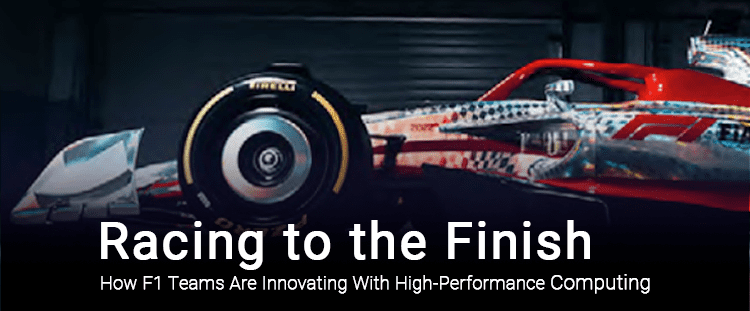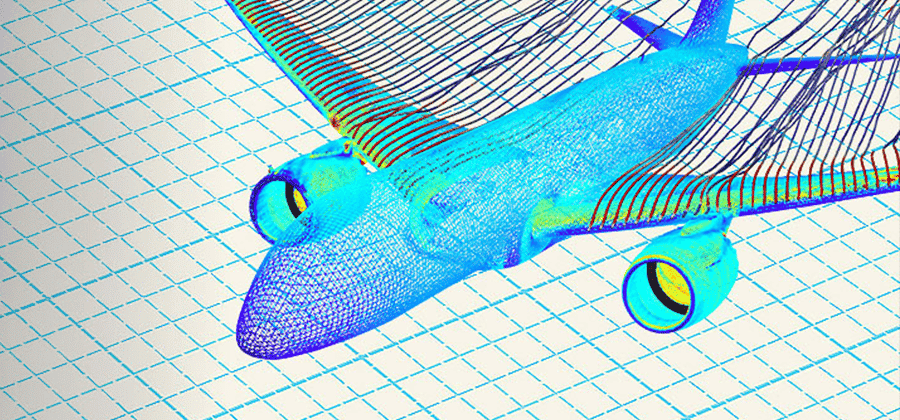Racing to the Finish Line: How F1 Teams Are Innovating With High-Performance Computing
Formula One (F1) is a sport powered by technology and innovation. F1 racing teams are constantly seeking to gain performance advantages over their competitors, making F1 a test bed of technological progress and engineering breakthroughs. And high-performance computing is at the center of much of this innovation.
A recent London Technology Club report “Technology and Formula 1” illustrates how innovation continues to be the arbiter of victory for F1 racing teams. To power their competitiveness, F1 teams are using high-performance computing (HPC) to continually innovate, improve safety, and manage budgets.
FIA, the governing body for world motor sports (Fédération Internationale de l’Automobile), is also adapting to keep up with the latest technologies utilized by F1 teams. And fans continue to demand digital enhancements for a deeper and more immersive F1 experience.
Formula One is not only the ultimate testing ground for automotive innovation, but its innovations are also helping make vehicles better and safer.
HPC Accelerates Innovation for Formula One and Across Industries

High-performance computing and computational simulations have been transforming not just the world of motorsports but also many other industries. In fields such as aerospace, defense, oil and gas, manufacturing, and transportation, engineers are using HPC to build, test and refine designs faster, more safely, and more cost-effectively.
Just as in Formula One, these industries are constantly looking for ways to improve their products, increase efficiency, and stay ahead of the competition.
HPC provides a powerful tool for these efforts, allowing engineers to simulate complex scenarios and analyze vast amounts of data in real-time, all while providing substantial cost savings and resource efficiencies.
Cloud Driving HPC Possibilities

To the benefit of Formula One and across industries, the cloud is democratizing high-performance computing. Any organization can now tap into supercomputers to drive digital innovation.
As reported in a recent white paper from Rescale, “Path to Digitally Transform Product Innovation,” migrating to cloud delivers a significant return-on-investment, including a 37 percent decrease in operational expenses, and a 391 percent return on investment within just three years.
By relying on computer simulations instead of physical tests, Formula One teams and other organizations can reduce the time, money, and resources required to make innovative improvements. And with cloud HPC, the teams can focus on racing rather than buying and maintaining supercomputers.
This is especially important for F1 teams, but businesses across industries are also in a race to win against the competition. And high-performance computing is bringing greater innovation speed to any organization that knows how to tap into this critical resource.
HPC is also proving a major aid in making prototype development and other tests safer while also ensuring products are safer. In fields such as transportation, energy, and manufacturing, engineers can use HPC simulations to explore new designs and ensure they meet safety regulations before they are ever built, leading to quicker results and significant cost-savings.
F1 teams use HPC to carry out simulations to test the safety of their vehicles before they hit the track, which can reduce the risk of accidents and improve the overall safety of the sport.
F1 Racing and Automotive Innovation

Given the paramount role of innovation in Formula One racing, FIA has now moved to limit the budgets of racing teams. The teams will have to modify how they test, and their overall budget will include what they spend on wind tunnel testing and CFD/hydrodynamics. HPC will play a critical role in how teams respond, allowing them to carry out cost-effective CFD simulations to improve aerodynamic performance of their cars.
Regardless of budget, creative automotive engineers relish the never-ending challenge of going faster and faster. And their cutting-edge advances are also speeding innovation outside of racing circles.
For example, Formula One has been at the forefront of developing hybrid engine and powertrain technology. In 2009, FIA introduced regulations that required teams to use hybrid power units, which combine a combustion engine with an electric motor and energy recovery systems. These regulations have led to significant advancements in hybrid technology that have since been applied to road cars.
Competition + Technology = Innovation
Certainly for F1 racing, competition spurs innovation, and high-performance computing is the critical foundation to that unending effort.
By tapping the power of the cloud, today’s F1 racing teams can perform the most intensive simulations and freely iterate on hundreds of digital prototypes to find a new advantage to reach the checkered flag first.
In Formula One, the race to innovate is never over.
Read the recent London Technology Club report “Technology and Formula 1” to explore how high-performance computing is at the center of innovation for Formula One.
The London Technology Club (LTC)
The London Technology Club is focused on connecting members with opportunities in the tech sector, providing access to competitive VC funds, and organizing events with technology leaders and entrepreneurs. Members of the Advisory Board include prominent international investors from various industries. The club has now published 14 reports since 2019.








